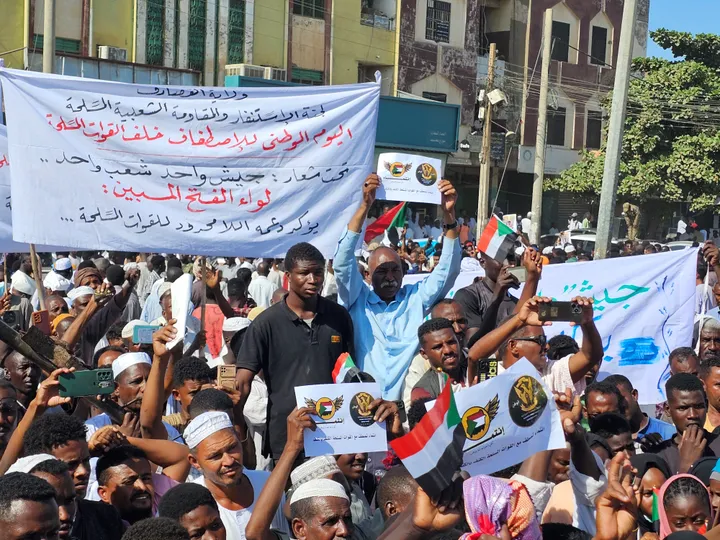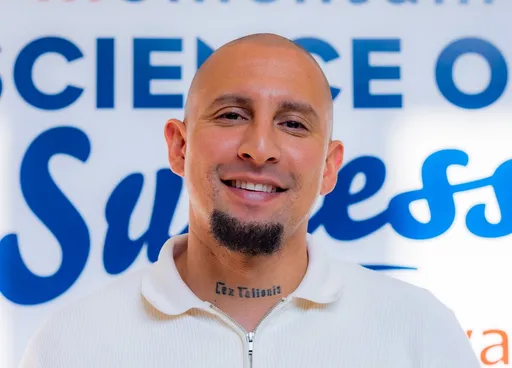By Sylvia Chebet
A home is sacrosanct in many ways – the one refuge you wouldn't want to part with for any reason.
Esther Muthoni decided to convert hers into a hospital for her peri-urban community without a second thought after the tiny healthcare facility her husband had set up a decade earlier faced closure due to eviction by their landlord.
Little did Esther know that her selfless act would fill a yawning gap public health facilities had long struggled to bridge.
Zamzam Medical Services, which sits at the foot of Ngong Hills on the outskirts of the Kenyan capital, Nairobi, now serves 13,000 patients annually.
The 18-bed hospital provides an alternative to Nairobi's stretched public health facilities covering a ballooning population of five million people.
Humble beginnings
Esther's journey started with a dream she shared with her husband, a medic. People in the neighbourhood would wait for him to return from work every evening so that they could consult him for various medical problems.
"Zamzam Medical Services started because we felt the need to answer the community's SOS," she tells TRT Afrika.
"There was this mother whose child would convulse, making her so nervous that she would just leave him with us and walk out. We would treat the boy and stay with him until his mother returned, days later," she recalls.
"With time, the queues grew longer, and many people sought services in the evening. That is how we thought of opening Zamzam Medical Services."
Esther and her husband rented a tiny room nearby. “Everything functioned within that space. It was the reception, the consultation room, the pharmacy and the cashier's counter, too," she says of how the mission began.
The healthcare centre would operate from that single room for 13 years before an unexpected hurdle cropped up: an eviction. There was only one option to consider now.
"Where Zamzam is today used to be my home," says Esther. "We had to do everything very fast – move out of the premises, knock down some walls, do some construction and get the public health officials to make an inspection for necessary approvals."
The whole process, including renovations, required money that Esther and her husband didn't have, especially after being out of business for some time following the eviction. This presented yet another challenge.
"We were not considered bankable," recounts Esther. "We once approached a certain financial institution and were turned down. We were ranked a risky business."
Coincidentally, the Medical Credit Fund, a not-for-profit corpus dedicated to financing small and medium enterprises in some African countries, was making inroads into the Kenyan market then.
Esther and her husband jumped on the opportunity and secured their first loan without collateral. In a setback to their effort, Zamzam drew a blank on the quality scale during a pre-disbursal assessment by the lender.
"They said we are in the ICU," says Esther. "That was the period when health policies weren't strong. As long as the place looked clean, nothing else mattered."
Personal blow
Just as the hospital began to take shape after many trials and tribulations, Esther's husband succumbed to a stroke. His sudden death would have taken their dream to the grave had it not been for her determination.
"The facility would have been still in the ICU or probably shut. To run a hospital is not cheap; you need money. And this money is sometimes not readily available. You have offered services, and you expect money to be paid, but that doesn't come when you need it," Esther says of the multiple challenges of staying afloat.
She now accesses credit from financial institutions through her phone to maintain a cash flow that helps her run daily operations, pay for utilities and maintain the facility.
"I feel very empowered," Esther says. "I initially couldn’t access loans from a normal bank without collateral from someone else…It was never easy anyway for a woman to own property. So, that made it doubly difficult to get loans from financial institutions."
Strength to strength
Zamzam Medical Services has expanded since Esther shifted the facility to what was once a home. It has a maternity unit, a dental section, a lab and even a physiotherapy room. It serves as a lifeline for the community.
Farida Rimanto, who grew up in the neighbourhood, has seen the facility transform from a shop selling medicine into a full-fledged health centre.
"I had both my kids there," Farida says. "It was so smooth from beginning to end."
Esther believes her healthcare facility is gradually getting to the point where it can grow bigger.
“I see Zamzam as a huge facility that can offer all the health services people need so that we don't need to refer patients," she says.
"I would want Zamzam to be a place where you can walk in and have everything done for you. That was my husband's dream, too."
Esther points out that while getting credit has become more convenient, there are still many hurdles.
"Licensing and taxation norms should be eased. For every department, there is a licensing procedure. You go to the medical board that covers the whole facility; then, you have the lab board and the pharmacy board. If you have a radiology department, you go to the radiology board," she says.
A raft of other regulations govern business permits along with the use of billboards and ambulance logos.
"You end up paying so much," rues Esther. "Delay in payment results in penalties at best and closure at the worst."
























